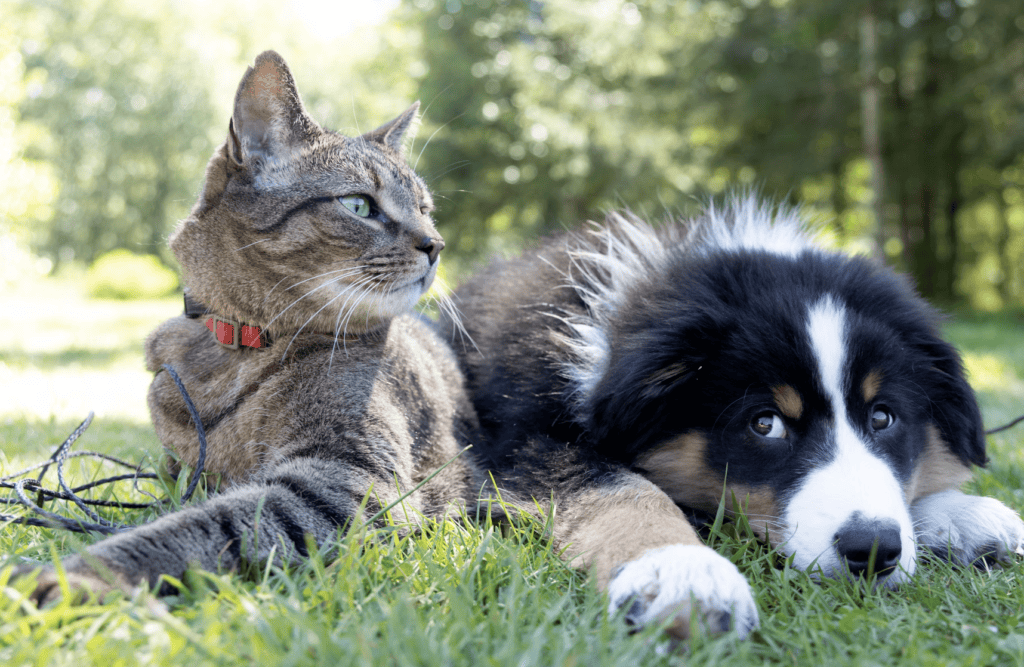Understanding and Managing Feline-Like Canine Behavior
Introduction
Have you ever noticed your dog displaying behaviors that seem more fitting for a cat? From perching on high places to meticulously grooming themselves, some dogs exhibit traits that are surprisingly feline. While this can be amusing, it can also leave you puzzled. Understanding why your dog acts like a cat can help you better cater to their needs and manage their behavior effectively. Let’s explore the reasons behind this quirky behavior and provide practical solutions.

Natural Instincts and Behaviors
Dogs and cats share some natural instincts and behaviors due to their predatory ancestry. These behaviors can sometimes make your dog seem more cat-like.
Hunting Instincts
- Stalking Prey: Both dogs and cats have a natural hunting instinct that can manifest as stalking or pouncing on toys.
- Pawing at Objects: Dogs might use their paws to explore and interact with their environment, similar to cats.
Grooming Habits
- Self-Grooming: Some dogs groom themselves extensively, much like cats. This behavior is normal and helps keep them clean.
- Licking: Dogs may lick their fur or your hands as a grooming habit.
Personality and Breed Traits
Certain dog breeds are more likely to exhibit cat-like behaviors due to their unique personalities and traits.
Independent Breeds
- Basenjis: Known for their independent and cat-like nature.
- Shiba Inus: Often display aloof and self-reliant behaviors.
Playful and Agile Breeds
- Papillons: These dogs are agile and enjoy climbing and perching.
- Italian Greyhounds: Known for their playful and nimble nature.
If you’re looking for tips on crate training a puppy, check out our article on how to crate train a puppy at night.
Environmental Influences
Your dog’s environment can also play a role in their feline-like behavior. Dogs that grow up around cats may mimic their actions.
Imitation and Learning
- Mimicking Cats: Dogs can learn behaviors from other pets in the household, including cats.
- Adapting to Environment: Dogs may adapt their behavior based on their surroundings and interactions with cats.
Attention-Seeking Behavior
Dogs may act like cats to get your attention or entertain themselves.
Seeking Interaction
- Jumping on Furniture: Your dog might jump on furniture or countertops to get closer to you or seek attention.
- Playing with Small Objects: Dogs may bat around small objects like cats to engage you in play.
For advice on managing high-energy behaviors, read our guide on how to calm a puppy down for bed.
Practical Advice for Managing Feline-Like Behavior
Here are some actionable steps to manage and understand your dog’s cat-like behaviors:
- Provide Mental Stimulation: Engage your dog with puzzle toys and interactive games.
- Create a Safe Space: Give your dog a designated area where they can climb and explore safely.
- Monitor Grooming: Ensure your dog’s grooming habits are healthy and not excessive.
- Positive Reinforcement: Reward desired behaviors and provide alternatives to climbing on furniture.
FAQ Section
Why does my dog climb like a cat? Dogs may climb to seek attention, explore, or mimic the behavior of other pets, such as cats.
Is it normal for my dog to act like a cat? Yes, it’s normal for some dogs, especially certain breeds or those raised around cats, to display cat-like behaviors.
How can I manage my dog’s cat-like behavior? Provide mental stimulation, create safe spaces for exploration, and use positive reinforcement to guide their behavior.
For more tips on managing energetic behaviors, especially when hiking with a puppy, check out our article on hiking with a puppy.
Conclusion
Understanding why your dog acts like a cat can help you manage their behavior and cater to their unique needs. Whether it’s due to natural instincts, breed traits, environmental influences, or attention-seeking, recognizing these behaviors is the first step in ensuring a happy and well-adjusted pet. By following the practical advice provided, you can create a balanced and harmonious relationship with your quirky canine companion.
*Disclosure: This post may contain affiliate links, meaning, I get a commission if you decide to make a purchase through one of my links, at no cost to you.
